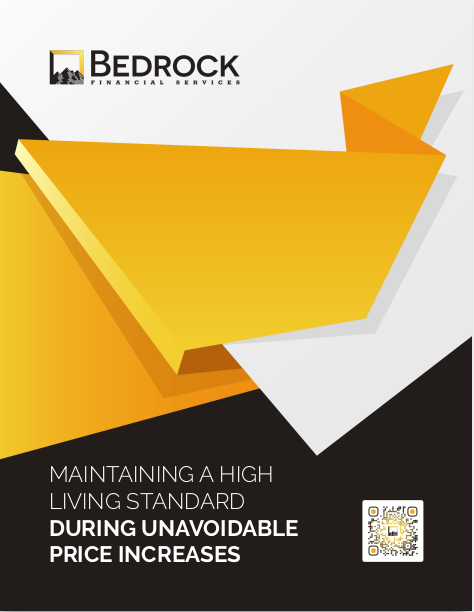Key Takeaways
-
Most financial professionals underuse powerful CRM features that can automate repetitive tasks and streamline daily operations.
-
Leveraging time-saving tools like workflow automation, task reminders, and email templates can free up multiple hours every week for high-value client work.
You’re Probably Not Using Your CRM to Its Full Potential
If you’re like most financial professionals, your CRM is likely one of the most underused tools in your business. Sure, you use it to store client contact information or log a few notes. But that barely scratches the surface. In 2025, modern CRMs are designed to go far beyond digital filing cabinets—they’re built to automate your day, organize your workflow, and cut down on time spent on administrative work.
Let’s break down the key features many financial professionals overlook, and how using them today could transform your week.
Workflow Automation Is More Than Just a Buzzword
One of the most powerful (and most ignored) features in CRMs is workflow automation. With just a few hours of setup, you can eliminate dozens of routine tasks that eat up your week.
How It Helps:
-
Automatic follow-up emails: Send scheduled emails after a consultation, meeting, or check-in.
-
Triggered task creation: Set rules so new tasks are created when certain actions occur (like submitting a form or completing a call).
-
Pipeline movement: Automatically move contacts through sales stages based on actions or dates.
You don’t need coding skills or technical support—most CRMs now offer drag-and-drop automation builders. If you haven’t explored this tab in your CRM yet, you’re leaving hours on the table every week.
Task and Calendar Sync Keeps You Out of Email Chaos
Are you still manually inputting tasks or relying on sticky notes? Your CRM likely has a calendar and task manager that integrates with your existing systems.
What You Can Do:
-
Sync tasks and appointments with your Google or Outlook calendar.
-
Get automatic reminders for client review dates, renewals, and required follow-ups.
-
Assign tasks to team members and track progress in one dashboard.
By centralizing your to-do list in your CRM, you reduce distractions and gain a single source of truth for your day.
Email Templates That Actually Sound Like You
Many professionals avoid CRM email templates because they fear sounding robotic. But in 2025, that’s no longer an issue. With customizable dynamic fields and natural-sounding structure, you can send bulk messages that still feel personal.
Uses That Save Time:
-
Prospecting outreach sequences.
-
Review meeting reminders.
-
Post-sale follow-up notes.
-
Annual policy update prompts.
You can even A/B test templates to see which messages get the most engagement—turning email from a chore into a strategic asset.
Integrated Notes and Document Storage Keep You Focused
Jumping between cloud drives, notebooks, and your CRM? Stop. Your CRM likely includes:
-
Secure document storage attached to each contact.
-
Clickable time-stamped notes that let you track every conversation.
-
Searchable records so you can instantly find key client details.
This centralization means you spend less time digging and more time delivering value.
Client Tagging Makes Segmentation Simple
Client segmentation isn’t just for marketing teams. You can—and should—use your CRM to tag and organize contacts based on their needs, goals, and service tier.
Tag Examples:
-
Retirement-focused
-
High-net-worth individuals
-
Medicare eligible
-
Annual review due
Once tagged, you can run targeted reports, launch campaigns, or even generate tailored reminders for each group. It’s a strategic advantage that takes just minutes to implement.
Mobile App Access Saves Time on the Go
You’re not always at your desk, but your business doesn’t stop moving. Most modern CRMs offer full-feature mobile apps that include:
-
Contact lookups
-
Note-taking after meetings
-
Task checklists
-
In-app calling and texting
Whether you’re commuting or heading into a client meeting, having access to your full CRM functionality helps you stay efficient in every setting.
Built-In Reporting Gives You Visibility Without the Spreadsheets
If you’re still exporting data to spreadsheets, you’re doing too much work. Most CRMs offer built-in dashboards and reports that let you track performance in real time.
What You Can Monitor:
-
Number of new leads per week
-
Follow-up task completion rates
-
Time spent per client type
-
Conversion rates by campaign
These insights help you adjust your priorities and optimize team workflows.
Client Journey Mapping Keeps You Consistent
Consistency is the foundation of retention. Your CRM should be able to map out each stage of the client journey—from first contact to long-term service.
Key Milestones to Track:
-
Initial contact and consultation
-
Proposal sent and follow-up
-
Onboarding documents completed
-
Annual review and check-in frequency
Mapping these stages allows you to automate each touchpoint, ensuring no one falls through the cracks.
Reminders and Recurring Tasks Remove Mental Load
Trying to remember dozens of client deadlines, license renewals, or follow-ups? Your CRM can automate all of that.
What You Can Schedule:
-
Monthly check-ins
-
Birthday greetings
-
Policy anniversaries
-
Required compliance reviews
Once set up, these reminders trigger automatically, freeing your mental space for strategy, not survival.
Lead Capture and Web Form Integration
You probably have a contact form on your website. But if that form isn’t directly feeding into your CRM, you’re slowing things down.
Benefits:
-
Auto-create contacts from web form submissions.
-
Assign them to a pipeline or workflow automatically.
-
Notify your team in real-time for faster response.
This connection can shave days off the sales cycle and dramatically improve client experience.
User Permissions and Role-Based Access
If you work with a team, permissions matter. Your CRM likely has access controls to keep sensitive data safe and workflows clean.
You Can:
-
Set who can view or edit client records.
-
Create approval workflows for team submissions.
-
Track accountability for each action taken in the system.
Better security and clarity in roles means fewer mistakes, less rework, and more focus.
You Don’t Need More Hours—Just Smarter Tools
Every financial professional wants more time. But the truth is, you probably don’t need longer workdays—you need more strategic use of the tools already at your fingertips.
Your CRM isn’t just a database. It’s a productivity platform, a communications system, a compliance safeguard, and a business growth engine. You just need to unlock the features it already offers.
Save Time, Stay Organized, and Work Smarter with the Right Tools
If you’ve been underusing your CRM, this is your sign to make a change. Reclaim your hours. Streamline your service. And start focusing on the things only you can do—like building client relationships and growing your practice.
At Bedrock Financial Services, we help professionals like you get more out of the tools you already use. Our systems and support are designed to help you turn everyday processes into automated workflows that save time and increase impact.
Sign up today to see how we can help you stop wasting time on manual tasks and start building a business that runs smoother every week.







